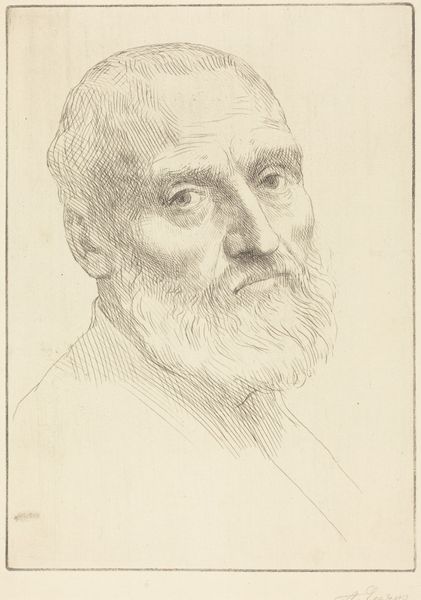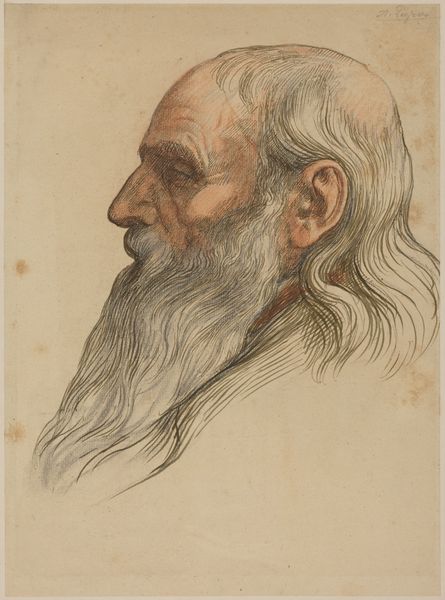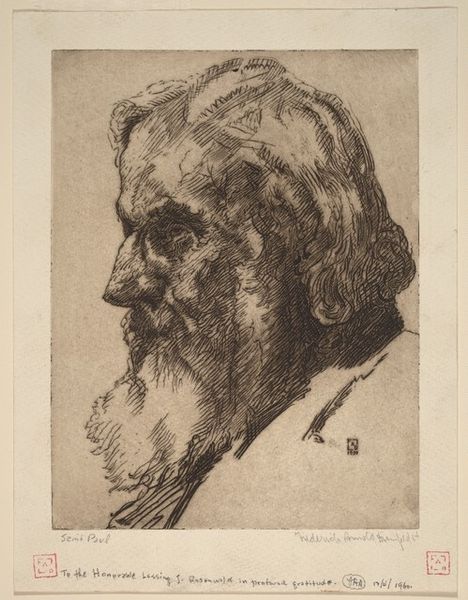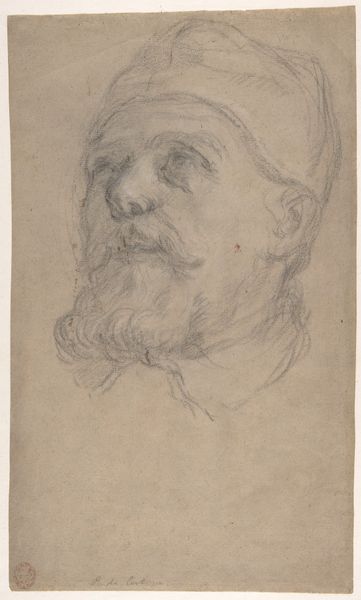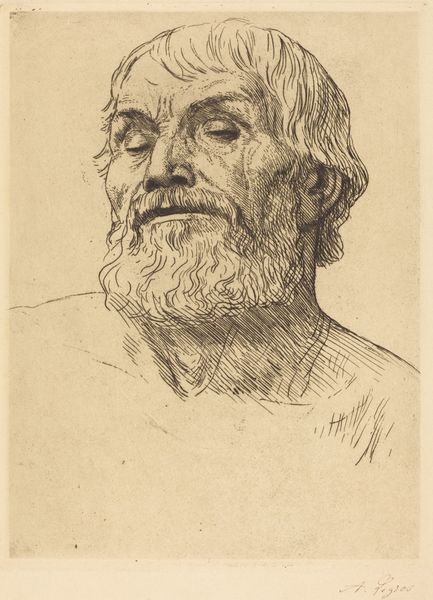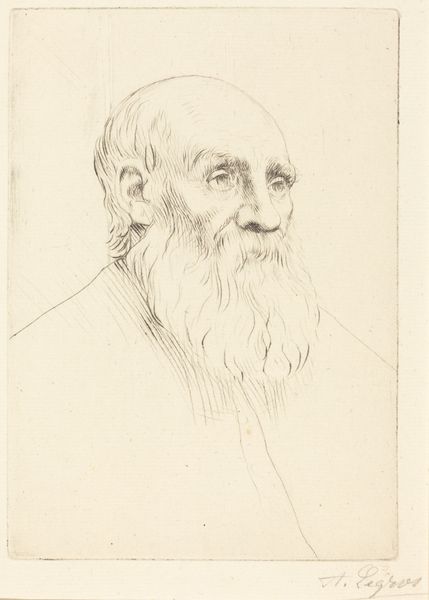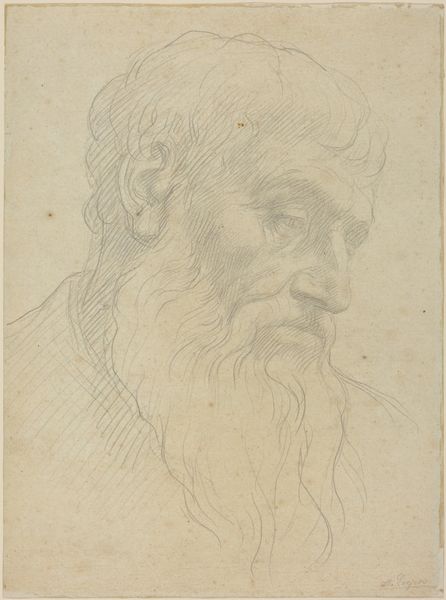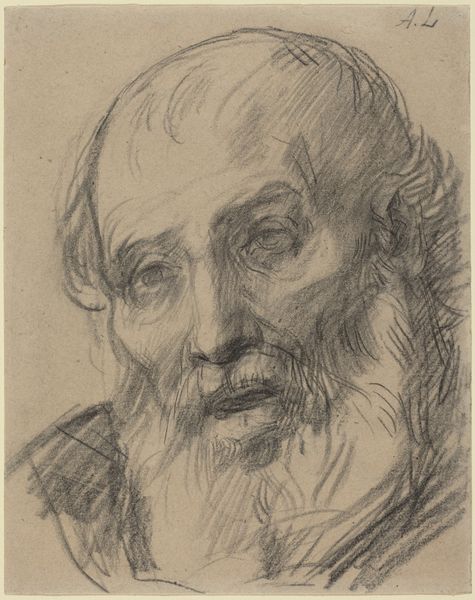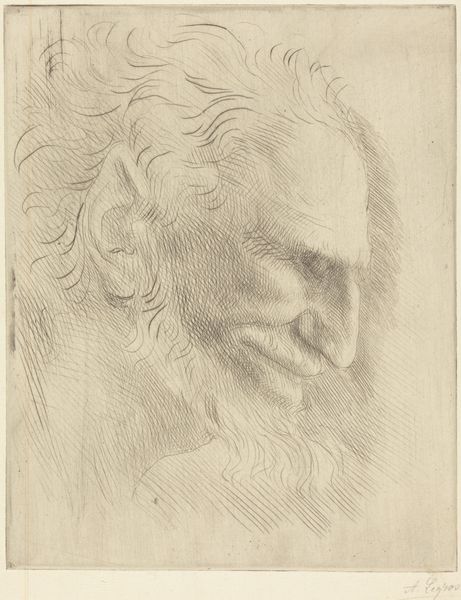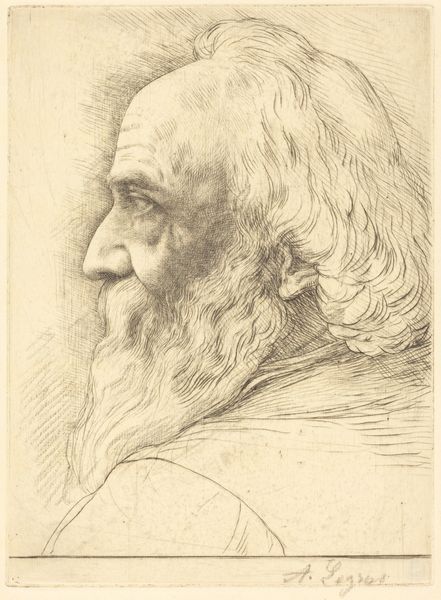
print, etching
#
portrait
# print
#
etching
#
realism
Copyright: National Gallery of Art: CC0 1.0
Curator: Here we have Alphonse Legros’ “Head of Souliote,” an etching rendered in incredibly fine lines. Editor: It has such a solemn presence. The meticulous linework and subtle shading give the portrait an almost photographic quality, despite being an etching. A timeless man, a timeless piece. Curator: Legros, active in the realist movement, was deeply engaged with representing working-class figures and scenes. There's a school of thought suggesting the 'Souliote' might symbolize resilience in the face of adversity, resonating with contemporary socio-political issues. Editor: The name 'Souliote' makes me wonder about its cultural roots. The profile, especially that strong nose and the flowing beard, suggests a wisdom born of experience. The beard itself— a very patriarchal symbol, indicates profound maturity, knowledge possibly passed through generations. Curator: Interesting point. There is little concrete data surrounding the genesis of "Head of Souliote," as Legros did not include notes with most of his pieces. However, what cannot be argued is Legros' printmaking process allowed for greater access to art for the burgeoning middle classes in the 19th century. Editor: And looking at it today, the accessibility translates to a striking immediacy. The detailed rendering makes him feel not distant, but present. You can imagine this man's voice, his stories. What visual narratives the beard must be able to tell! Curator: Absolutely. Prints like these served a crucial role in disseminating images and ideas, shaping public opinion, and influencing social reform, bringing art outside of the bourgeois. It shows us art has always been in conversation with sociopolitical realities. Editor: To me, "Head of Souliote" transcends any singular moment or movement. The work explores an ancient ideal—the philosopher king, the timeless patriarch, rendered with a careful eye. Curator: Ultimately, whether a political statement or a universal ideal, this work speaks to the enduring power of portraiture and the capacity of art to hold a mirror to society. Editor: Yes, regardless of time, "Head of Souliote" resonates with the human condition—its struggles, its dignity, and its enduring quest for meaning.
Comments
No comments
Be the first to comment and join the conversation on the ultimate creative platform.


